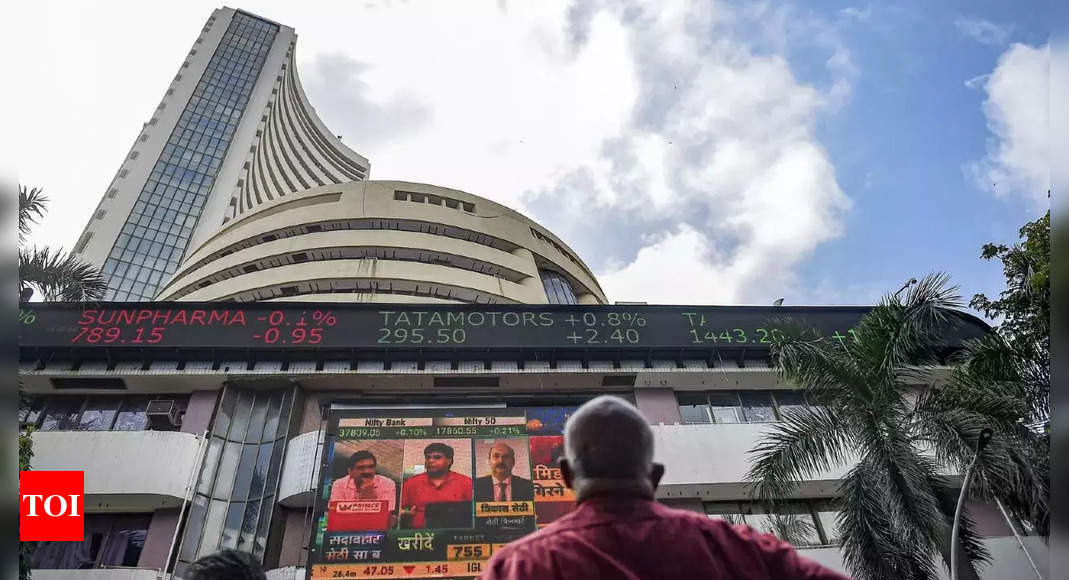Both the indices fell over 2 per cent each after the RBI raised benchmark lending rate to 4.40 per cent to contain inflation.
The BSE index plunged 1,306 points or 2.29 per cent to close at 55,669. While, the broader NSE Nifty settled 392 points or 2.29 per cent lower at 16,678.
Bajaj Finance, Bajaj Finserv, Titan, IndusInd Bank, HDFC Bank and Maruti were the top losers in the sensex pack falling as much as 4.29 per cent. Twenty-seven out of 30 stocks finished in red.
Whereas, PowerGRid, NTPC and Kotak Bank were the only gainers.
On the NSE platform, all sub-indices finished in red with Nifty Media, Realty, Healthcare and Consumer Durables falling over 3 per cent each.
In a bid to contain inflation, the RBI increased the benchmark lending rate by 40 basis points to 4.40 per cent. Inflation has remained stubbornly above the target zone of 6 per cent for the last three months.
The decision follows an unscheduled meeting of the Monetary Policy Committee (MPC), with all six members unanimously voting for a rate hike while maintaining the accommodative stance.
“The MPC’s decision, in an unscheduled meeting, to raise the repo rate by 40 bps and CRR by 50 bps is a surprise since it came on the LIC IPO opening date. MPC’s proactive move is justified from the perspective of inflation management, but the timing leaves a lot to be desired.
“The above 1,000 point crash in sensex has soured the sentiments on the opening day of India’s largest IPO,” V K Vijayakumar, chief investment strategist at Geojit Financial Services told news agency PTI.
In terms of global markets too, shares were mostly lower on Wednesday as investors waited for a decision by the Federal Reserve on interest rates.
Central banks in many countries are raising rates as inflation squeezes businesses and consumers. To counter that, regulators are gradually increasing costs for borrowing that had dipped to record lows during the pandemic.
Watch Bloodbath in Dalal street: Sensex crashes 1,307 points after RBI hikes repo rate
For more information call us at 9891563359.
We are a group of best insurance advisors in Delhi. We are experts in LIC and have received number of awards.
If you are near Delhi or Rohini or Pitampura Contact Us Here

